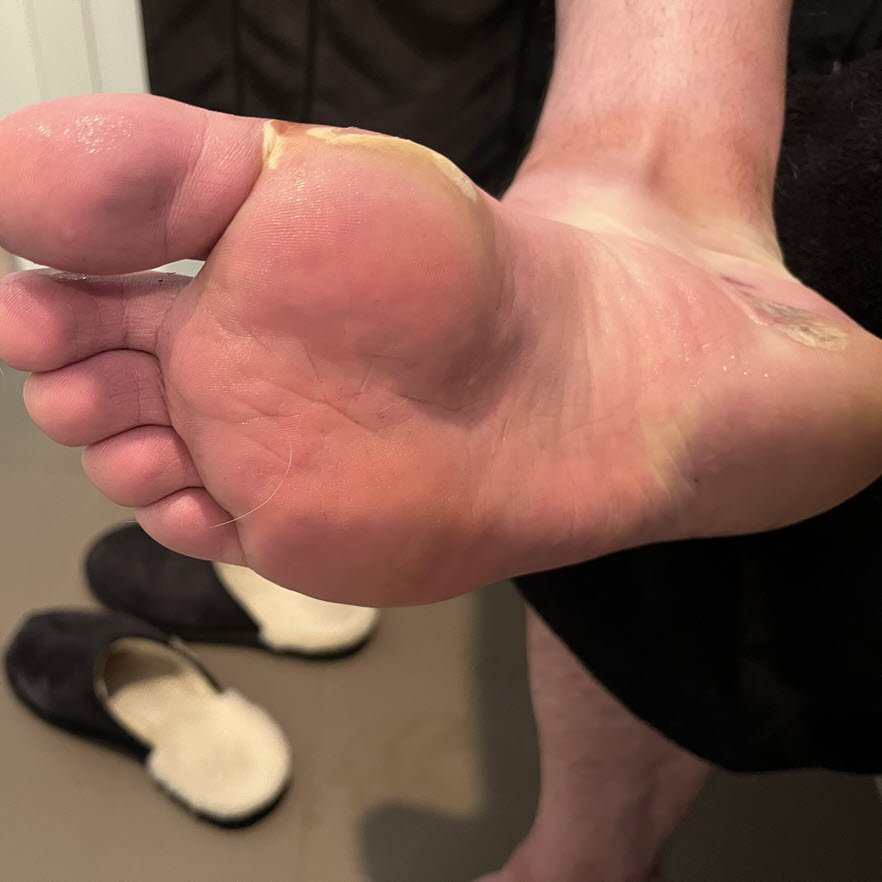Recognizing Excessive Sweating: Dermatology Insights on How to Stop Sweaty Hands
Recognizing Excessive Sweating: Dermatology Insights on How to Stop Sweaty Hands
Blog Article
Introducing the Intricacies of Excessive Sweating: A Comprehensive Guide to Diagnosis and Management
Too much sweating, clinically recognized as hyperhidrosis, is a problem that affects a significant number of people and can have a profound impact on their top quality of life. While sweating is a natural bodily function, its overactivity in hyperhidrosis presents an unique collection of obstacles that typically go past simple discomfort.

Understanding Hyperhidrosis Causes
Hyperhidrosis causes can be associated to numerous factors such as genes, hormonal inequalities, and certain medical problems. Genes play a substantial function in key focal hyperhidrosis, where people inherit the condition from their family members. By recognizing the specific elements adding to too much sweating, medical care providers can tailor treatment strategies to attend to the underlying reason, offering alleviation and improving the quality of life for individuals impacted by hyperhidrosis.
Acknowledging Hyperhidrosis Manifestations

Additionally, hyperhidrosis symptoms might materialize in psychological and social distress, as individuals may really feel ashamed or anxious concerning their sweating, causing avoidance of social situations (Treatment for hyperhydrosis of hands). Furthermore, repeated episodes of excessive sweating can result in skin maceration, fungal infections, and an overall decline in self-esteem
Diagnostic Refine for Hyperhidrosis
Launching the diagnostic process for too much sweating involves thorough examination of the person's case history and checkup. Asking about the beginning, period, and sets off of sweating episodes is critical to separate between main focal hyperhidrosis and second generalised hyperhidrosis. Medical history needs to likewise consist of inquiries concerning medications, medical problems, and family background of hyperhidrosis.
Throughout the physical exam, particular interest is paid to the locations affected by sweating. The healthcare supplier might assess the degree of sweating, look for signs of underlying conditions, and assess the influence of sweating on the individual's lifestyle. In addition, particular tests like the gravimetric test, starch-iodine test, or skin conductance dimensions might be conducted to measure the quantity of sweat generated.
Moreover, in instances where secondary hyperhidrosis is thought, extra examinations such as blood tests, urine examinations, and imaging researches might be advised to recognize the underlying source of too much sweating. The analysis procedure intends to precisely figure out the kind and root cause of hyperhidrosis to guide appropriate management strategies.
Treatment Alternatives for Hyperhidrosis
When dealing with excessive sweating, various treatment alternatives are readily available to reduce signs and boost the individual's high quality of life. The therapy approach for hyperhidrosis relies on the extent of signs and symptoms and the individual's reaction to initial treatments.
Topical therapies, such as aluminum-based antiperspirants, are commonly suggested as the first line of protection for taking care of light cases of hyperhidrosis. These items function by plugging the sweat air ducts, therefore decreasing the amount of sweat that reaches the skin's surface area. For individuals with more extreme symptoms, dental medications like anticholinergics might be recommended to help lower sweating. These medications can have side effects and are not appropriate for everyone.

Effective Management Methods
To effectively manage hyperhidrosis, a detailed and customized treatment plan tailored to the patient's particular needs and feedback to previous treatments is important. This plan may incorporate a mix of healing strategies, consisting of way of living alterations, topical therapies, dental drugs, botulinum toxin injections, iontophoresis, and in extreme instances, medical treatments like sweat gland removal or sympathectomy. Way of life modifications such as wearing moisture-wicking apparel, making use of antiperspirants, and exercising stress-reducing methods can complement clinical treatments. Topical antiperspirants having light weight aluminum chloride are commonly the first-line treatment, with stronger solutions offered for resistant instances. Dental medicines like anticholinergics may be suggested for generalised hyperhidrosis. Botulinum toxin shots are reliable for focal hyperhidrosis, giving temporary alleviation by blocking the launch of acetylcholine. Iontophoresis, involving using a reduced electrical current to minimize sweat gland task, can be beneficial for both palmoplantar and axillary hyperhidrosis. Surgical choices are normally scheduled for extreme, refractory cases and call for careful factor to consider of dangers and advantages. A multidisciplinary approach including dermatologists, medical care medical professionals, and, if needed, surgeons, can enhance the monitoring of hyperhidrosis.
Conclusion
In verdict, hyperhidrosis is a problem identified by extreme sweating, which can considerably affect an individual's high quality of life. With appropriate medical diagnosis and management approaches, individuals suffering from hyperhidrosis can locate relief and improve their total well-being.
Too much sweating, medically understood as hyperhidrosis, is a condition that influences a substantial number of people and can have a profound impact on their quality of life. By identifying the particular factors adding to extreme sweating, healthcare companies can tailor therapy strategies to attend to the underlying cause, providing relief and improving the top quality of life for individuals influenced by hyperhidrosis.
Hyperhidrosis, identified by too much sweating beyond what is required for managing body temperature, can dramatically influence an individual's top quality of life. Inquiring concerning the beginning, period, and sets off of sweating episodes is crucial to set apart between key focal hyperhidrosis and additional generalised hyperhidrosis. Treatment for hyperhydrosis of hands.In final thought, hyperhidrosis is a problem identified by too much sweating, which can considerably impact an individual's top quality of life
Report this page